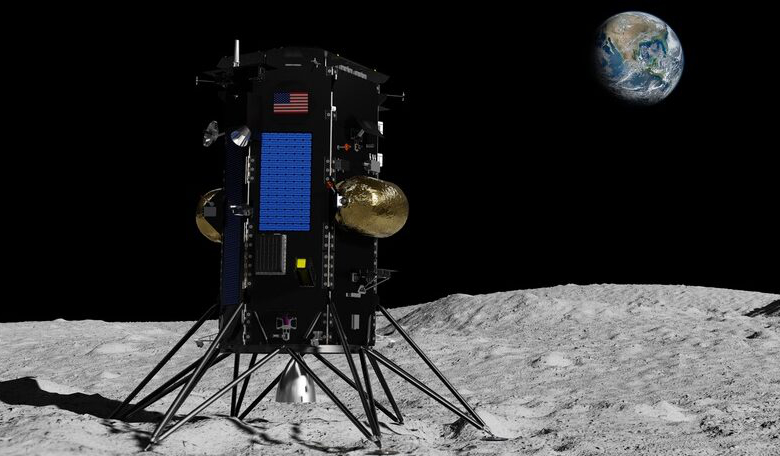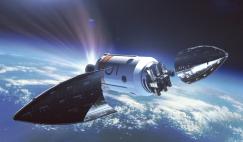From a flying helicopter on Mars and a new martian rover, sampling asteroid material and moon dust, the first crewed suborbital flights for Blue Origin and the first all-civilian crew to fly with SpaceX, the construction of a new Chinese space station, plans for lots more new space stations, the launch of JWST (finally), and possibly finding signs of life on Enceladus, it’s safe to say that 2021 was an epic year for all things space-related. So what is there to look forward to in 2022?
With space-faring nations and private companies alike eyeing up our nearest celestial neighbour, it is likely that 2022 could be the year of the Moon.
Slated to launch sometime around August 2022, South Korea will begin their first Moon exploration mission with the Korea Pathfinder Lunar Orbiter (KPLO).
Built in collaboration with NASA, the KPLO is designed to study the lunar environment, topography and resources, as well as identify potential landing sites for future missions, as it orbits the the Moon for a year.
Fresh from their success with the Hope probe, the United Arab Emirates has a string of missions lined up, including the deployment of their Rashid rover on the lunar surface.
Expected to reach the Moon in autumn of next year, the craft, which will be delivered by ispace's HAKUTO-R lander will be the first moon landing for the Arab world and for Japan.
Also in late 2022, Lunar Outpost will see their rover land near the Moon’s south pole carrying with it 4G communications equipment for NASA’s Artemis programme.
Carried to their destination by Intuitive Machines' lunar lander, Lunar Outpost’s M1 Mobile Autonomous Prospecting Platform (MAPP) rover will also scoop up some regolith, take a picture of it, and send the image back to NASA. Why you might ask?
Rather than relying on its own missions, NASA has said it wants to partner with the private sector to explore the potential of moon mining.
To facilitate the start of such agreements, in late 2020, NASA announced that it had awarded contracts to four companies to collect soil from the moon ranging in price from $1 to $15,000. Luna Outpost was the lowest bidder.
While being paid 10 cents to extract lunar resources might seem strangely low – the first payment represents 10 percent of the total bid price, $1 – the transaction not only marks the first sale of resources in space, but it also sets a legal and procedural framework for future exploitation of space resources by the private sector; for the US at least.
Although not heading for the Moon, the first private crewed mission to the International Space Station (ISS), will also take place in 2022.
Organised by Axiom Space, the Axiom Mission 1 (Ax-1) flight is being arranged under a commercial agreement with NASA. Its four crew members include Michael Lopez-Alegria, a retired NASA astronaut; Larry Connor, a US real estate entrepreneur; Mark Pathy, a Canadian investor and philanthropist; and Eytan Stibbe, an Israeli businessman and fighter pilot.
The crew members have all recently cleared their medical evaluations and the mission is scheduled to launch on 28 February.
NASA will themselves be hoping for success in 2022 with their first SLS mission, Artemis 1. The agency’s huge 101 metre-tall Space Launch System has endured numerous delays over the years but is now targeting possible launch windows between 12-27 March and 8-23 April for its inaugural flight.
The space agency will also be busy launching Psyche in 2022, a mission to study a metallic asteroid of the same name.
Flying on top of a Falcon Heavy rocket in July, Psyche will fly 450 million kilometres to give scientists a glimpse of our deep past by taking a close look at a rocky-iron body which is thought to resemble the interior of terrestrial planets like our own.
On its journey, Psyche will also be used to validate a new ion propulsion system and a new method of communication by laser. This technology demonstration encodes its messages on photons – particles of light – instead of radio waves, which gives it the potential to transmit far more data back to Earth in a given amount of time than traditional communication systems.
Meanwhile, Boeing, along with NASA, are targeting no earlier than May 2022 for the rescheduled second uncrewed Orbital Flight Test-2 (OFT-2) of the company's Starliner spacecraft.
This will be Boeing's second attempt at reaching the space station after its first, Orbital Test Flight-1 (OFT-1), failed to reach the ISS after succumbing to unexpected valve problems.
"Because of the combined work, we have a much better understanding of the contributors that led to the valve issues, and ways to prevent it from happening in the future. Boeing remains diligent and driven by the data during its decision making, which is key to ensuring the Starliner system is ready when we fly our test missions in 2022,” Steve Stich, NASA's Commercial Crew Programme manager said in an agency blog post.
Aiming to do for Jupiter’s frigid moons what Cassini did for Saturn’s weird and wonderful moons, the European Space Agency's (ESA) Jupiter Icy Moons Explorer (JUICE) mission will blast off in May 2022 for a seven year journey to the Jovian System.
Upon arrival, Juice will then spend at least three years making detailed observations of the giant gaseous planet Jupiter and three of its largest moons, Ganymede, Callisto and Europa.
Data collected from the mission will be used by scientists to hopefully learn more about the moon’s hidden oceans, strange geysers blasting water ice into space and whether any of these frozen worlds are hospitable for life. Mission scientists also hope that Juice will also help us to make new discoveries about Jupiter itself.
May could prove to be a busy month for launches if Russia’s troubled Luna-25 mission overcomes problems that has so far left it grounded.
Initially set for blast off in October this year, the country’s first mission to the Moon’s surface in 45 years was postponed until May 2022 at the earliest due to "problems" encountered with the spacecraft landing system during crucial tests.
Due to land near the lunar south pole, its two primary scientific objectives of the mission are to study the composition of the polar regolith, and to study the plasma and dust components of the lunar polar exosphere. Luna-25 will also be used to test future landing technology.
And last, but by no means least, no list of space-themed events would be complete without a mention of SpaceX. On top of the many missions Elon Musk’s space exploration has a helping hand in with its suite of Falcon rockets, the company is also pushing hard with the completion of Starship; Musk’s massive stainless steel spaceship, the entrepreneur hopes will soon make it to Mars.
This fully reusable transport system capable of carrying up to 100 people once complete, has crashed and burned a couple of times during the development stage so far, but Musk is hoping for its first orbital test flight around March 2022.
If all goes according to plan, Starship will make it to orbit for a brief period of time before reentering Earth's atmosphere and splashing down in the Pacific Ocean. As many as a dozen test flights are expected to follow after this inaugural flight.











